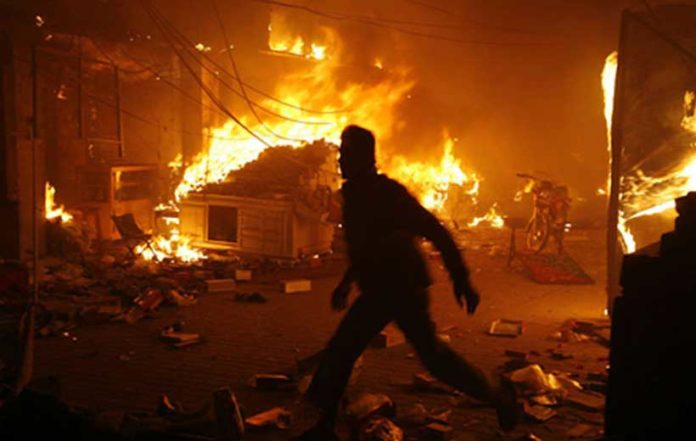Pakistan’s battle against terrorism is a costly struggle for stability amidst internal challenges and external irritants.
Recent data reveals a troubling surge in terrorism and militant activities in Pakistan, particularly in the Khyber Pakhtunkhwa (KP) and Balochistan regions. Despite the Pakistani government’s efforts, the situation remains complex and severe, necessitating a sharp examination of its causes, effects, and broader impacts.
In 2023, Pakistan witnessed a horrendous increase in violence, with 1,524 fatalities and 1,463 injuries resulting from 789 terror attacks and counter-terror operations. KP and Balochistan emerged as the epicentres of this violence, collectively accounting for over 90 percent of all fatalities and 84 percent of recorded attacks. KP saw a 55 percent rise in militant attacks, while Balochistan experienced a 57 percent increase. The year was recorded as the deadliest one in nearly a decade for the security forces[1].
In 2024, the situation remains more or less the same. In the second quarter of 2024, KP and Balochistan experienced nearly 92 percent of all fatalities and 87 percent of attacks, including both terrorism and counter-terror operations[2]. During this period, the country saw 380 violence-linked fatalities and 220 injuries from 240 incidents of terror attacks and security operations.
The resurgence of Tehreek-i-Taliban Pakistan (TTP) and the growing influence of Daesh (ISIS) are major catalysts. Reports from the Ministry of Interior indicate a troubling influx of TTP members into KP’s merged districts, while Daesh’s attempts to establish a foothold in Pakistan and its attacks on religious minorities exacerbate the already volatile environment. The proliferation of sophisticated weapons and evolving tactics among these groups has further complicated Pakistan’s security challenges. Several other external factors contribute to this instability. The withdrawal of US forces from Afghanistan may have brought relative peace in the neighborhood, but for Pakistan, it has
proved to be a ‘rude awakening,’ says Imtiaz Gul, a senior journalist and political analyst. The Afghan Taliban’s reluctance to address the TTP threat has intensified Pakistan’s security concerns amidst its internal economic and political challenges.
Another critical factor is the alleged involvement of India in supporting militant activities against Pakistan. Pakistan has accused India of aiding the TTP and facilitating cross-border attacks. Statements from Pakistani officials[3] and remarks by former insurgents such as Sarfaraz Bagulzai suggest that Indian proxies are involved in insurgent activities in Balochistan.
Domestic factors such as long-standing socioeconomic grievances also play a significant role. Edwin Sutherland’s Framework of Social Disorganization helps explain this dynamic: when social institutions such as family, community, and education fail to function effectively, society becomes disorganized. This breakdown can lead to increased violence and unrest as social norms and controls weaken. Similarly, Maslow’s Hierarchy of Needs highlights how unmet basic needs can fuel frustration and discontent. When fundamental needs like food, shelter, and security are not met, individuals are more likely to experience dissatisfaction with governance and societal structures, potentially leading to social unrest. Balochistan and KP score lowest on the Human Development Index (HDI), so the unrest in these regions is self-explanatory.
The impact of this instability is extensive. It threatens Pakistan’s democratic processes, as evidenced by disruptions to the 2024 General Elections and attacks on political rallies. Besides, recent attacks on Chinese workers and investments have heightened concerns in Beijing, prompting calls for improved security measures, as such threats are undermining investor confidence in Pakistan.
The financial burden is not to be overlooked. A 2016-17 economic survey by the Government of Pakistan states that between 2001 and 2016, the direct and indirect costs incurred by Pakistan due to incidents of terrorism amounted to US$ 123.13 billion, equivalent to Rs. 10,373.93 billion[4].
Terrorism is a complex and urgent challenge that not only costs lives but diminishes little space for progress that we may have. Food for thought is that while the focus on security and counter-terrorism is crucial, it has perpetuated Pakistan’s image as a security state, diverting resources and attention from essential social and economic development, which is crucial for achieving long-term stability and growth. The situation in hotbeds of violence like KP and Balochistan highlights the critical need for effective counter-terrorism strategies, regional cooperation, and socioeconomic development of the affected regions.
After decades of suffering due to militancy, proxy wars, and policies that prioritize impressions rather than sustainability, it is time for our policymakers and leaders to uphold the welfare and aspirations of the people. Having said that, while the recently announced Azm-e-Istehkaam[5] operation may be the need of the hour, but the lessons from the past and scenarios from the present must not be forgotten. The country is at a juncture where it can only afford efforts that address the root causes of militant violence. [6].
[1] https://thefridaytimes.com/31-Dec-2023/2023-deadliest-year-for-security-forces-in-nearly-a-decade
[2] https://crss.pk/terrorism_continues_to_batter_pakistan/
[3] https://www.dawn.com/news/1799803
[4] https://finance.gov.pk/survey/chapters_17/Annex_IV_War.pdf
[5] https://moib.gov.pk/News/62472
[6] https://thediplomat.com/2024/07/pakistans-azm-e-istehkam-operation-old-wine-in-a-new-bottle/




